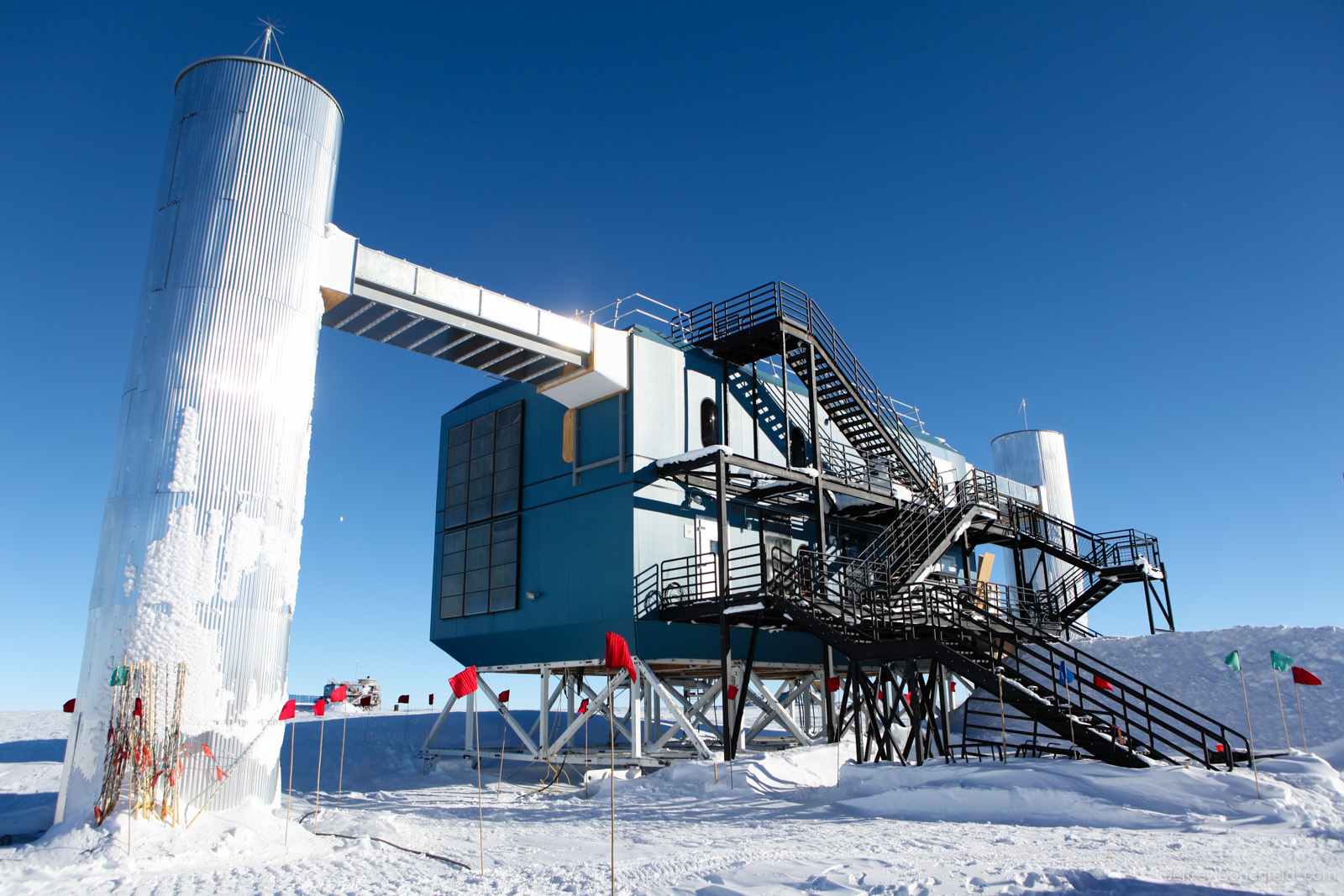One of the amazing benefits of living here at the South Pole is that I get access to some of the world’s leading scientists, and the experiments they’re working on. In fact, the luxury of having meals and chatting with scientists, and then being able to go out to their experiments is by far one of the absolute best things about living here. It’s truly a once in a lifetime opportunity to have this many amazing people living together in one building. Once such experiments is the Ice Cube Neutrino Observatory. Photos.
After making friends with a few of the scientists working on the Askaryan Radio Array (ARA) project coupled with the Ice Cube Lab, I was invited out to the main lab building to check out the facility, as well as help the ARA project set up their workshop.
First, a bit of background on Ice Cube:
IceCube is a particle detector at the South Pole that records the interactions of a nearly massless sub-atomic particle called the neutrino. IceCube searches for neutrinos from the most violent astrophysical sources: events like exploding stars, gamma ray bursts, and cataclysmic phenomena involving black holes and neutron stars. The IceCube telescope is a powerful tool to search for dark matter, and could reveal the new physical processes associated with the enigmatic origin of the highest energy particles in nature. In addition, exploring the background of neutrinos produced in the atmosphere, IceCube studies the neutrinos themselves; their energies far exceed those produced by accelerator beams. IceCube is the world’s largest neutrino detector, encompassing a cubic kilometer of ice.
And on the Askaryan Radio Array (ARA) from Wisc.edu:
Building on the expertise gained in these efforts, and the infrastructure developed in the construction of the IceCube optical Cherenkov observatory, we are developing an array, known as ARA (The Askaryan Radio Array), and installing it in the deep ice near the geographical South Pole. South Polar ice is, in fact, perhaps the most extensively-studied on the planet, the combination of ice thickness and favorable radiofrequency dielectric characteristics, as well as the excellent scientific infrastructure and the co-location of the IceCube Observatory, makes that site unparalleled for this study. With a fiducial area of an unprecedented 80 km$^2$, ARA’s size was chosen to ensure the detection of the flux of neutrinos “guaranteed” by the observation of the GZK cutoff by HiRes and the Pierre Auger Observatory. Within 3 years of commencing operation, the full ARA will exceed the sensitivity of any other instrument in the 0.1-10 EeV energy range by an order of magnitude. Because the antennas will be deployed in boreholes extending below the firn layer to 200 m depth, it will have the ability to distinguish surface noise from sources originating in the ice cap, otherwise not possible in the ballon borne approach employed by ANITA. Even under the extreme assumption that UHE cosmic rays are pure iron, ARA will have sufficient sensitivity to establish the presence or absence of the secondary UHE neutrinos produced by the interaction of cosmic rays with the cosmic microwave background. Such an observatory would also provide an unique probe of long baseline high energy neutrino interactions unattainable with any man-made neutrino beam.
Visiting the lab,and helping out with both setup of the worksite, as well as observing the installation of new networking hardware was great. A few pics:



























Comments
3 responses to “Exploring the Ice Cube Neutrino Observatory”
[…] Ice Cube Neutrino Observatory […]
[…] Ice Cube Neutrino Observatory […]
[…] Exploring the Ice Cube Neutrino Observatory […]